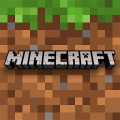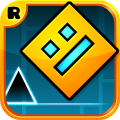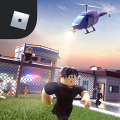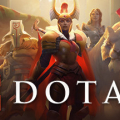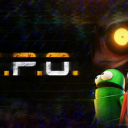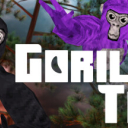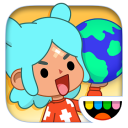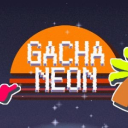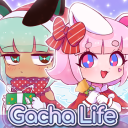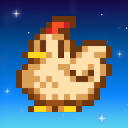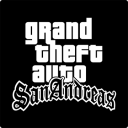Minecraft
There’s something enchanting about entering a world where everything you see—mountains, oceans, forests, caverns—is made up of uniform blocks. Minecraft is, in many ways, a digital leap back to childhood basics: it’s essentially the grandest box of Lego you could ever imagine. Yet more than a decade after its early release, this indie hit from Mojang remains not just relevant, but positioned at the very center of gaming culture. What is it about Minecraft that enables it to straddle continents, age groups, and a plethora of platforms, forever unblocked by generational shifts in gamer tastes? Let’s dig deep into why Minecraft continues to inspire, surprise, and sustain a complex global community.
First Impressions: Installation to Exploration
From the moment you install Minecraft and launch your first world, the experience is raw and open-ended. There’s no grand narrative pushing you forward, no detailed tutorial or excessive handholding (though the improved onboarding is more friendly today than years past). Instead, the game asks you: "What do you want to do?"
The initial hours can range from exhilarating to intimidating for newcomers. You gather resources, craft tools, and try to survive your first night—an event that carries both urgency and wonder. Minecraft’s visual identity has been consistent: blocky, vivid, and instantly recognizable. The pixelated landscape is both a design limitation and creative statement, supporting low hardware requirements but also generating a surreal, universal appeal. When you download or install Minecraft for the first time, the learning curve levels off quickly, and suddenly you’re crafting, mining, and building like a pro.
Modes and Styles: Survival vs. Creative Play
Minecraft’s dual primary game modes—Survival and Creative—offer fundamentally different experiences. In Survival, you scavenge, defend yourself against monsters, and manage hunger. There’s a constant risk-reward element, requiring planning, strategy, and grit. Creative mode, meanwhile, unleashes the hobbyist in every player, granting infinite resources and invincibility so you can build anything without boundaries.
This bifurcated approach gives individuals complete agency. One session might see you painstakingly gathering materials to fortify your humble cabin against the night’s denizens; another might find you in the same world, suddenly with cheats or mods enabled, letting you manipulate time, invent new mechanics, or even install custom creations from a massive online library.
Community and Multiplayer: Connection Without Borders
Perhaps more than any other feature, Minecraft’s multiplayer is its living, breathing soul. LAN worlds, realms, public servers, and mini-games all make up a web of play styles as varied as gamer imaginations. Easy cross-platform support—from PC to console to mobile—means friends can play together in ways that few contemporary games allow. For those seeking an unblocked experience at school or work, there are even browser-based clones or unofficial builds, keeping the spirit of accessibility alive despite institutional firewalls.
What’s consistently astonishing is how Minecraft adapts within each unique group or community. Some servers are competitive or survival-centric, others are collaborative utopias, and still more serve as massive social spaces, hosting art shows, conventions, or thematic events. All of these strengthen the feedback loop, ensuring that the game keeps evolving—even when Mojang itself pauses for breath.
Mods, Cheats, and Custom Content: Endless Horizons
One reason Minecraft has remained vibrant is its approach to content modification. Mojang actively encourages player creativity, providing extensive documentation and even APIs for modders. Downloading and installing mods is as simple as seeking out the right community build or launcher; once set up, you can add new biomes, monsters, items, mechanics, or entirely new modes of play.
While official multiplayer servers may restrict or outright forbid cheats and unlicensed tweaks, many private or local servers exist in a wild west of possibility. Want jetpacks? Install a mod. Dreaming of Pokémon in your world? There’s a conversion for that. Whether you’re after quality-of-life cheats, epic new quests, or visual tweaks, the modding ecosystem ensures no two players will ever have the same experience. However, fair use is important—using cheats on public or protected servers is a surefire way to lose access.
World Generation and Exploration: Infinite Possibility
One of Minecraft’s quietly magical features is world generation. Each new seed produces a fresh, never-before-seen universe, filled with procedurally generated structures, monster lairs, sunlit valleys, and secrets below. You’re never done exploring. I’ve spent hundreds of hours spelunking in caverns so intricate, you’d swear they were hand-designed. The addition of new update content—caves, biomes, mobs, and structures—has only expanded this inherent sense of wonder.
Yet, despite this scale, the game’s mechanics never grow unwieldy. Even younger players or those just getting into gaming find it accessible, thanks to simple controls and logically structured crafting. Over time, advanced players gravitate towards redstone (Minecraft’s unique wiring system), automating farms, or even programming pseudo-computers in-game—proof that the sandbox is only as limited as your imagination.
Unblocked Accessibility: Minecraft Anywhere, Anytime
A major draw for many is Minecraft’s ubiquity. Almost every modern platform has a version: Java Edition for PC and Mac, Bedrock for consoles and mobile, and even educational editions for students. For those who want a free or trial-based experience, there’s a Minecraft Classic version playable in-browser. Unblocked versions can be found for school environments or chromebooks through unofficial channels, though these lack up-to-date features and safety. Minecraft's ability to stay relevant across hardware, regions, and age boundaries is simply unmatched.
Performance, Sound, and Visuals
Despite its primitive looks, Minecraft is cleverly optimized. The diminutive block scale not only provides charm, but also ensures stability even on low-end PCs or phones. Recent updates have introduced ray tracing and improved textures, showing that fidelity can coexist with artistic restraint. Audio design is minimal yet evocative—gentle music blends with weather and creature sound cues, fostering both comfort and unease.
Performance is rarely an issue, unless you start piling on mods or massive community creations (*looking at you, thousand-chunk Redstone computers*). Still, even then, players have the option to tweak settings, opt for the “Lite” versions, or rely on cloud gaming.
The Drawbacks: Friction in a Blocky Paradise
Minecraft, for all its strengths, is not without flaws. Updates can occasionally upset balance or break mod compatibility, leaving dedicated servers in the lurch. Certain platforms (particularly older consoles and mobile) are limited compared to PC versions, especially regarding mods or community content. Parental oversight is often necessary on public servers, as in any open online environment. And while the core game loop is endlessly replayable, some may experience burnout or wish for more guided direction.
Final Verdict: Why Minecraft Remains Essential
Minecraft is much more than a game. It is a cultural phenomenon, a toolbox, a learning platform, and a social hub. Whether you play for free with classic options, download the full experience via official means, or augment your sessions with mods and cheats in single player, the possibilities are endless. The community is active, the platform support is unparalleled, and creative potential has only expanded over time. While the sandbox genre has exploded in the past decade, none have matched Minecraft’s resilience or innovation. For both veterans and first-timers, the invitation to “play” remains as fresh as ever.
Pros
- Offers endless creative freedom through building, customization, and exploration.
- Highly accessible—runs on almost any device, across major platforms.
- Strong multiplayer support, with both official realms and community servers available worldwide.
- Active, thriving modding scene adds limitless replayability and customization.
- Procedural world generation ensures every session feels unique.
- Simple mechanics with surprising depth, appealing to both beginners and expert gamers.
- Family-friendly, with educational applications and regular safety features built in.
Cons
- Mod updates and compatibility issues can disrupt gameplay, especially after major official updates.
- Limited feature set or mod support on some console and mobile versions compared to PC.
- Online public servers can expose players to unmoderated behavior or content.
- The visuals, while iconic, may not appeal to everyone—some find the blocky style unappealing long-term.
How to Download and Play Minecraft on Different Platforms
Minecraft is a paid sandbox game with a demo version available for free. Whether on PC, console, or mobile, getting started is straightforward, but requires purchasing for full access. Here’s what you need to know for each device.
- Windows PC: Fully available. Download Minecraft Java Edition from minecraft.net or Bedrock/Windows Edition from the Microsoft Store.
- Mac: Available. Java Edition can be installed directly from minecraft.net, but Bedrock is not supported.
- Chromebook: Not natively supported; playing requires using cloud gaming like Xbox Cloud or NVIDIA GeForce Now, or by running Linux/Android apps for PE. Unofficial unblocked browser versions exist but lack full features.
- PlayStation 5: Supported. Download the Bedrock Edition from the PlayStation Store.
- PlayStation 4: Available. Find it on the PlayStation Store.
- PlayStation 3: Only the “Legacy Console Edition” is available, no longer receiving updates.
- Xbox Series X/S: Fully supported through Bedrock Edition via the Microsoft Store.
- Xbox One: Supported. Download Bedrock Edition via Microsoft Store.
- Xbox 360: Legacy Console Edition is available, but updates have ceased.
- Xbox Cloud: Play on cloud services with Game Pass Ultimate if using a supported device.
- Nintendo Switch: Bedrock Edition can be downloaded from the Nintendo eShop.
- Android: Available on Google Play and Samsung Galaxy Store (paid). Download, install, and play on almost all modern Android devices.
- iOS (iPhone/iPad): Fully supported, download via App Store. Purchase required.
To install Minecraft, download from your device’s official marketplace or the Minecraft website. For cloud play or unsupported systems, registration and an account with a service provider are needed.
For PC/Java Edition, you’ll need at least: Intel Core i3 CPU, 4 GB RAM, and an Intel HD Graphics 4000 GPU. Android demands a 64-bit device with 2GB RAM and Android 8.0+, while Macs require OS X 10.9 with 4GB RAM and a compatible graphics card.
Minecraft enthusiastically supports mods on Java Edition, but not on Bedrock (consoles/mobile), where only official marketplace content is allowed. Cheats can be toggled for single-player worlds, but are restricted on public or competitive servers.
Unblocked versions (browser-based or unofficial APKs) exist for use in restricted environments, but typically lack the latest updates and security. Official Minecraft cannot be played unblocked without proper access or bypassing firewall restrictions.
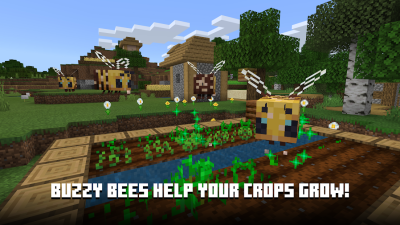
To download the app, you will get links to the Official Website and/or official digital markets.


